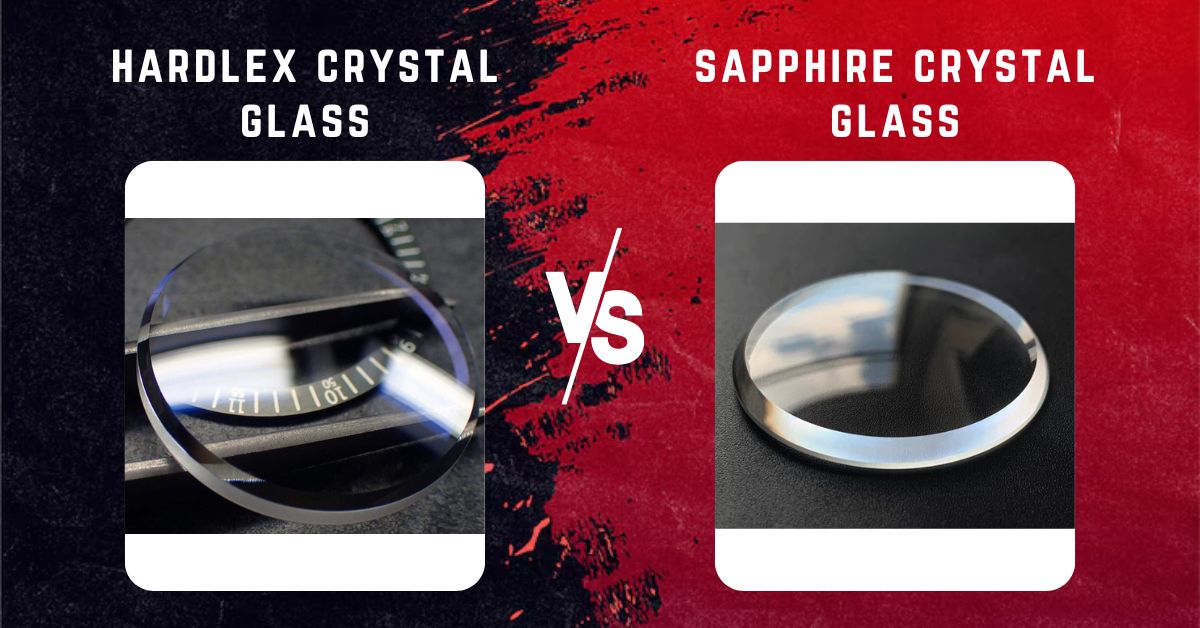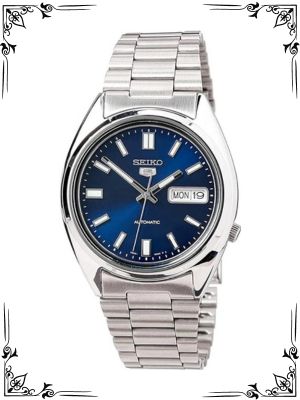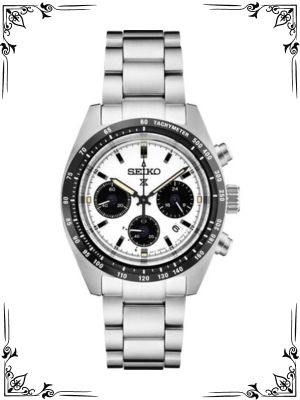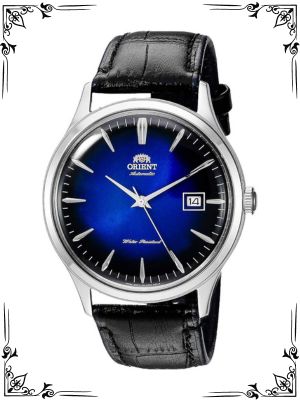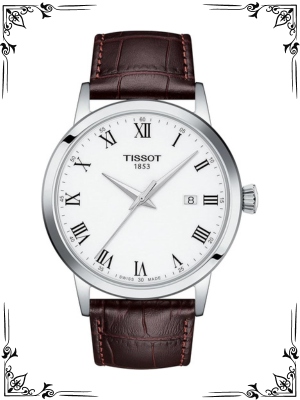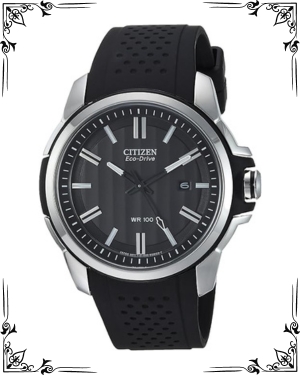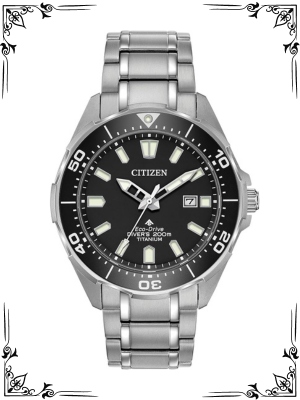Hardlex vs. sapphire crystals? Tough choice! Hardlex is cheaper and resists impacts, but scratches more. Sapphire is nearly scratch-proof but shatters easier. Go for affordability and impact resistance with Hardlex, or choose scratch-resistant with pricier sapphire.
Introduction
The watch crystal, the transparent window protecting the delicate inner workings of a timepiece, plays a crucial role in both aesthetics and functionality. Two of the most common materials used for watch crystals are Hardlex and Sapphire.
While both offer clarity, choosing between them depends on your lifestyle and priorities. This comprehensive guide delves into the key differences between Hardlex and sapphire crystals, helping you determine the best fit for your watch.
Hardlex Crystal: A Toughened Glass Act
Hardlex is a trademarked name by Seiko for a specially hardened mineral crystal. It’s essentially a type of tempered glass specifically formulated for watch applications. The tempering process involves controlled heating and cooling, enhancing the crystal’s strength and making it more resistant to shattering compared to standard mineral glass.
Key characteristics of Hardlex crystals:
- Durability: More resistant to impacts and shocks compared to standard mineral glass.
- Scratch resistance: Moderately scratch-resistant, but not as scratch-proof as sapphire.
- Clarity: Excellent optical clarity, offering good visibility of the watch face.
- Cost-effective: A more affordable option compared to sapphire crystals.
Sapphire Crystal: The Jewel of Watch Clarity
Sapphire crystal is a synthetically grown material composed of crystallized aluminum oxide (corundum). It’s the second-hardest natural transparent substance after diamond, making it exceptionally resistant to scratches.
Key characteristics of sapphire crystals:
- Scratch resistance: Nearly scratch-proof, offering superior protection against everyday wear and tear.
- Durability: Can withstand some impacts, but more susceptible to shattering compared to Hardlex.
- Clarity: Excellent optical clarity, providing a clear and undistorted view of the watch face.
- Cost: Generally more expensive than Hardlex crystals.
- Anti-reflective coating: Often features an anti-reflective coating (AR coating) for enhanced readability in various lighting conditions.
Hardlex vs. Sapphire Crystal – Key Differences
| Feature | Hardlex Crystal | Sapphire Crystal |
|---|---|---|
| Material | Tempered mineral glass | Synthetically grown sapphire |
| Scratch Resistance | Moderate | Excellent |
| Impact Resistance | Higher | Lower |
| Clarity | Excellent | Excellent |
| Cost | More affordable | More expensive |
| Anti-reflective coating | Usually not present | Often present |
Popular Model Showdown
Hardlex Crystal Watches
Seiko 5 Series: This iconic series from Seiko is renowned for its affordability and reliability. Many Seiko 5 models, like the SNKL23 and SNXS79, utilize Hardlex crystals, making them a budget-friendly option for everyday wear.
Orient Bambino: This popular dress watch from Orient is known for its classic design and elegant aesthetics. The Bambino often comes equipped with a Hardlex crystal, striking a balance between affordability and scratch resistance for daily use.
Citizen Eco-Drive Series: Several models within Citizen’s Eco-Drive lineup, known for their light-powered technology, utilize Hardlex crystals. This combination offers an eco-friendly and affordable option for those seeking a functional and stylish timepiece.
Sapphire Crystal Watches
Seiko Prospex Series: This series caters to divers and adventure enthusiasts. Seiko Prospex models, such as the Seiko Prospex SRPB51 and the Seiko Prospex Marinemaster, almost always feature sapphire crystals for exceptional scratch resistance needed for underwater exploration and demanding activities.
Tissot T-Classic Series: This series encompasses a wide range of styles, from dress watches to chronographs. Many Tissot T-Classic models, like the Tissot Le Locle and the Tissot Chemin des Tourelles, utilize sapphire crystals, offering a blend of elegance and superior scratch resistance for everyday wear.
Citizen Promaster Series: Designed for athletes and adventurers, the Citizen Promaster series necessitates a highly durable crystal. Models like the Citizen Promaster Nighthawk and the Citizen Promaster Skyhawk utilize sapphire crystals to withstand the challenges of diverse environments.
When to Choose Hardlex Crystal
- Active Lifestyle: If your watch endures frequent bumps and potential drops due to an active lifestyle, Hardlex offers better shatter resistance.
- Budget-Conscious: Hardlex is a more cost-effective option for those seeking a good balance of durability and affordability.
- Vintage or Classic Aesthetics: Some watch designs incorporate Hardlex to maintain a classic or vintage aesthetic.
When to Choose Sapphire Crystal
- Scratch-Prone Activities: Sapphire provides superior scratch resistance for those who frequently encounter abrasive materials.
- Premium Quality: Sapphire elevates the perceived value and overall quality of a watch.
- Improved Readability: The anti-reflective coating on sapphire crystals often enhances readability, especially in bright sunlight.
Beyond the Basics: Additional Considerations
- Thickness: Sapphire crystals can be slightly thicker than Hardlex crystals, potentially affecting the overall watch profile.
- Replacement Cost: Replacing a scratched sapphire crystal can be more expensive than replacing a Hardlex crystal.
- Watch Type: High-end luxury watches often utilize sapphire crystals as a standard feature.
Choosing Between Hardlex and Sapphire: Key Questions
- What is your lifestyle like? If your activities involve a high risk of impact, Hardlex might be a better choice. For a more sedentary lifestyle, sapphire’s superior scratch resistance might be more important.
- What is your budget? Hardlex is a more affordable option, while sapphire crystals typically come at a premium.
- How important is scratch resistance? If preventing scratches is a top priority, sapphire reigns supreme.
- Do you need superior readability? Sapphire’s anti-reflective coating can be a game-changer in terms of clear visibility.
- What type of watch are you considering? Luxury watches often feature sapphire crystals as standard, while some tool or sports watches might utilize Hardlex for its shatter resistance.
Conclusion
There’s no single “best” choice between Hardlex and sapphire crystals. Both offer distinct advantages and cater to different needs. By understanding your lifestyle, and budget, and watching usage habits, you can make an informed decision.
Remember, the ideal crystal depends on your priorities. If you prioritize affordability and impact resistance, Hardlex might be the way to go. However, if scratch resistance
FAQs
Which is tougher?
Hardlex offers better impact resistance, meaning it’s less likely to shatter from a drop. Sapphire, however, is the clear winner in scratch resistance, ideal for those prone to nicks and scrapes.
Which is more expensive?
Hardlex is a more budget-friendly option. Sapphire crystals typically come at a premium.
Which offers better clarity?
Both materials boast excellent optical clarity, allowing for clear viewing of the watch face. Sapphire crystals often include an anti-reflective coating for enhanced readability in various lighting conditions.
Which is better for an active lifestyle?
Hardlex might be a better choice due to its superior shatter resistance. However, for activities with a high risk of scratches, sapphire’s superior scratch resistance wins.
Which is found in luxury watches?
High-end watches often utilize sapphire crystals as a standard feature due to their superior scratch resistance and perceived higher quality.

